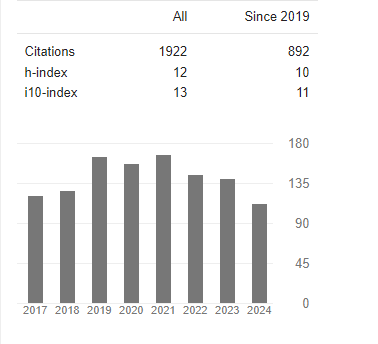Adsorptive Potential of Acid Modified Moringa Oleifera Wastes for Tannery Effluent Decontamination
Abstract
Wombo NP, Itodo AU, Wuana RA and Charles O Oseghale
Removal of chromium from tannery effluent was carried out using low-cost adsorbents derived from Moringa oleifera seed shells and pods adsorbents. The precursor was modified using acid (H2 SO4 ) impregnation method and characterized using CHNO/S elemental analyzer, FT-IR, SEM, TEM and PXRD. Physicochemical study of the tannery effluent was carried out and documented. Result shows that most physico-chemical parameters investigated for the effluent are above the permissible limit outlined by WHO. Initial concentration of the pollutant, Chromium (987 mg/L) exceeds WHO limit. The maximum adsorption capacity of AMMOS was found to be 137.4 mg/g and that of AMMOP was 277.3 mg/g for chromium removal. Column adsorption study was used to study the effect of experimental variables (pH, initial adsorbate concentration, contact time, adsorbent dosage and temperature), while RE% of Cr by the adsorbents was calculated and recorded for all experimental runs. The equilibrium study for the sorption of Cr was investigated using the Langmuir, Freundlich, Dubinin-Radushkevich and Temkin isotherm model. The linearity of the respective models include: Langmuir (R2 of 0.271 for AMMOP and 0.7661 for AMMOS), Freundlich R2 values for AMMOS (0.8337) and AMMOP (0.6485) thus, presenting the Freundlich model as the most applicable isotherm model. Temkin and Dubinin-Radushkevich isotherm models gave poor fittings for Cr on the adsorbents. The rate and mode of diffusion is best explained using the Pseudo-second order kinetic and film diffusion respectively suggesting that the kinetics of the sorption process is controlled by diffusion through the liquid film surrounding the solid sorbent. The efficiency in remediation of effluent using the adsorbents as compared with commercial activated carbon at 95% confidence interval shows that there is no significant difference. This implied that the used of Moringa oleifera seed shells and pods for adsorbents is an economically viable approach to combat remediation challenges in the removal of Chromium from Tan chrome liquor.



